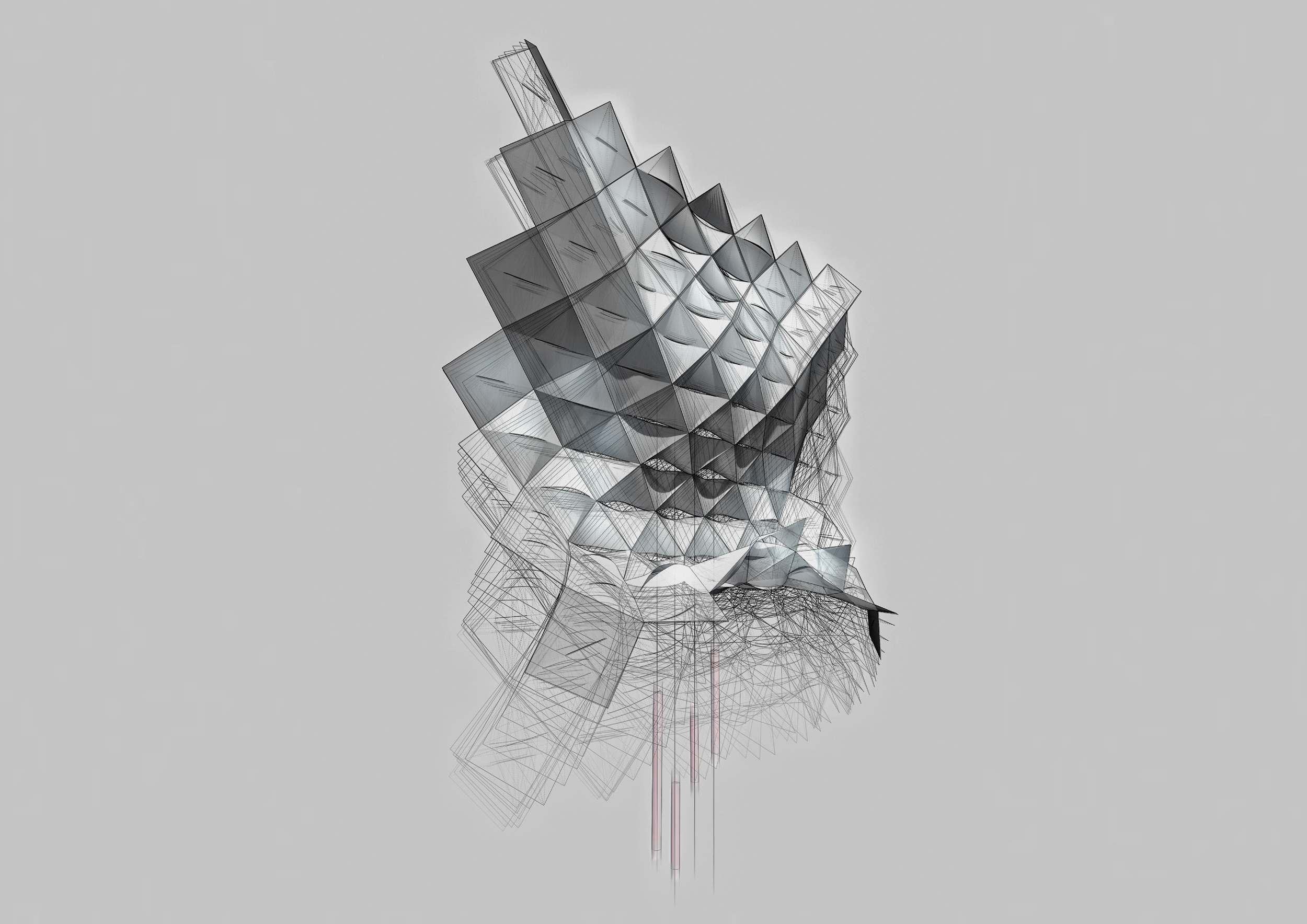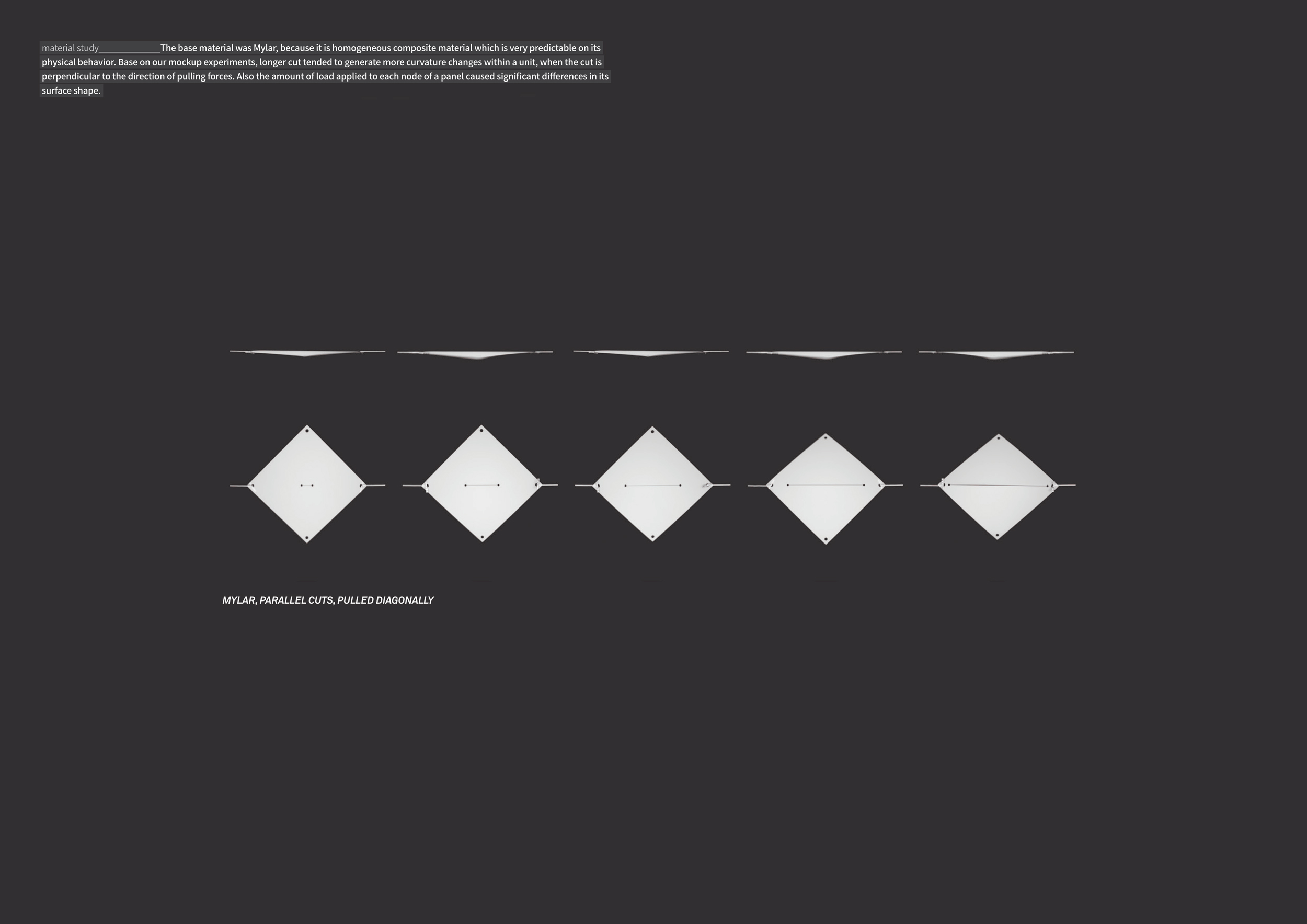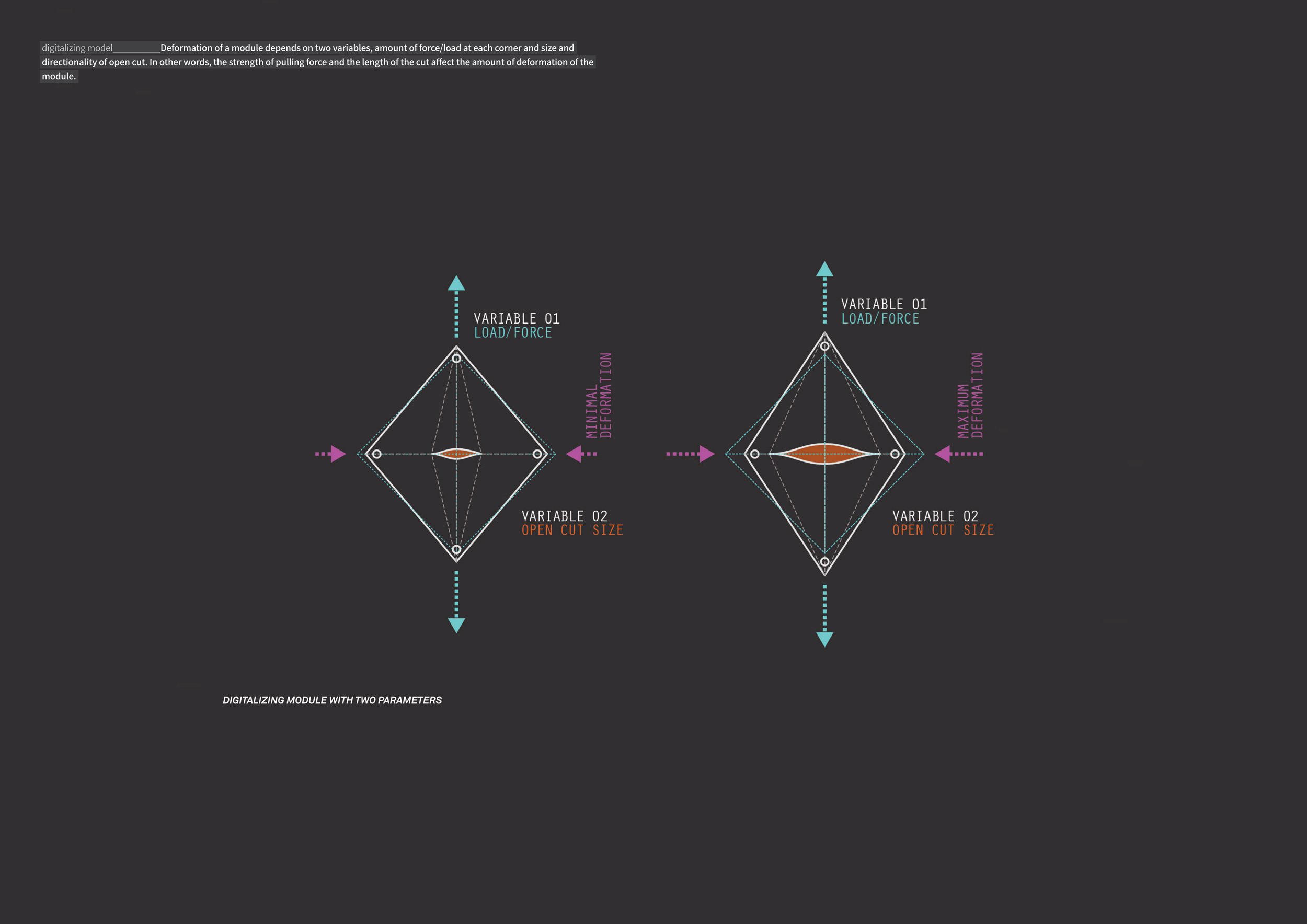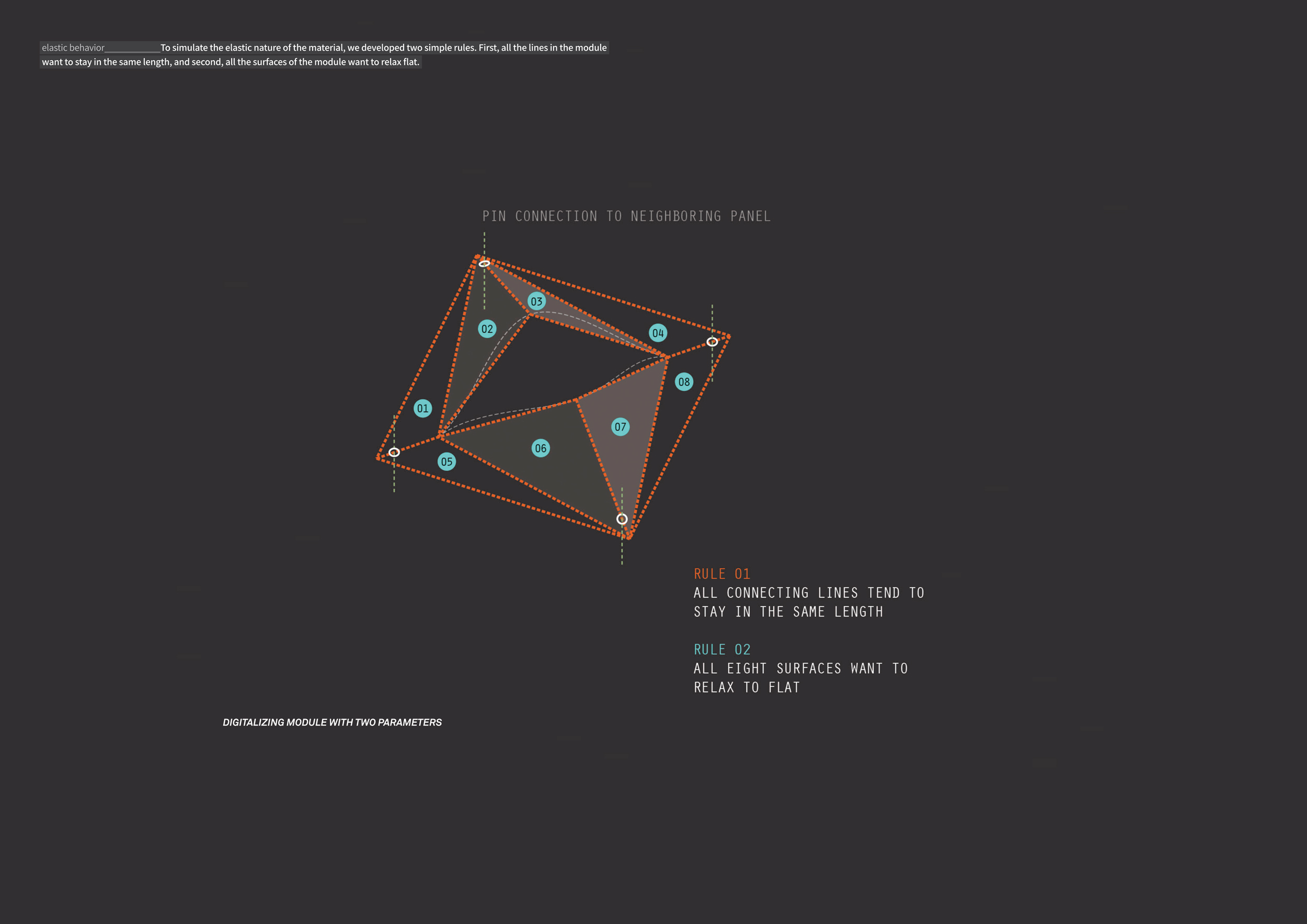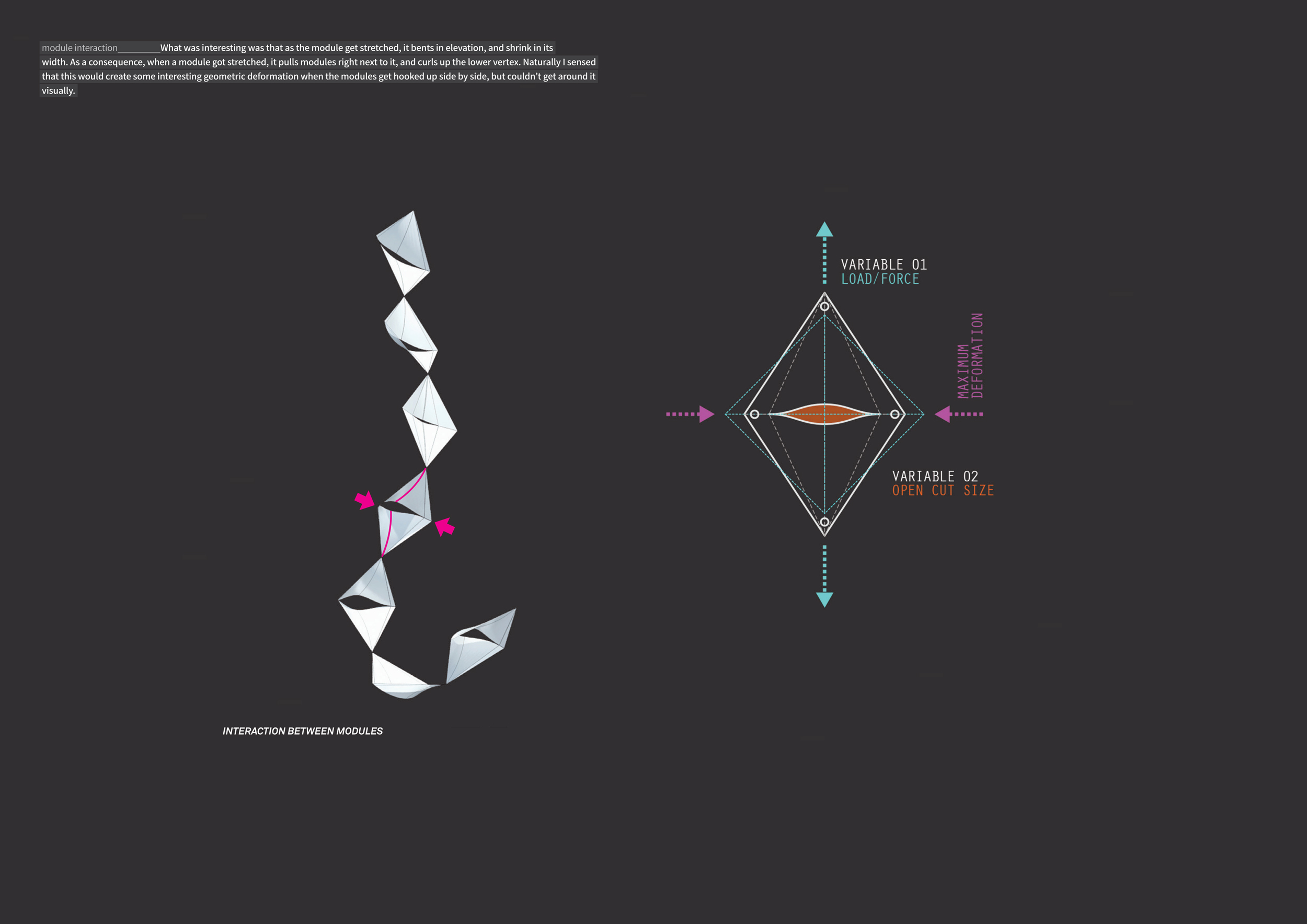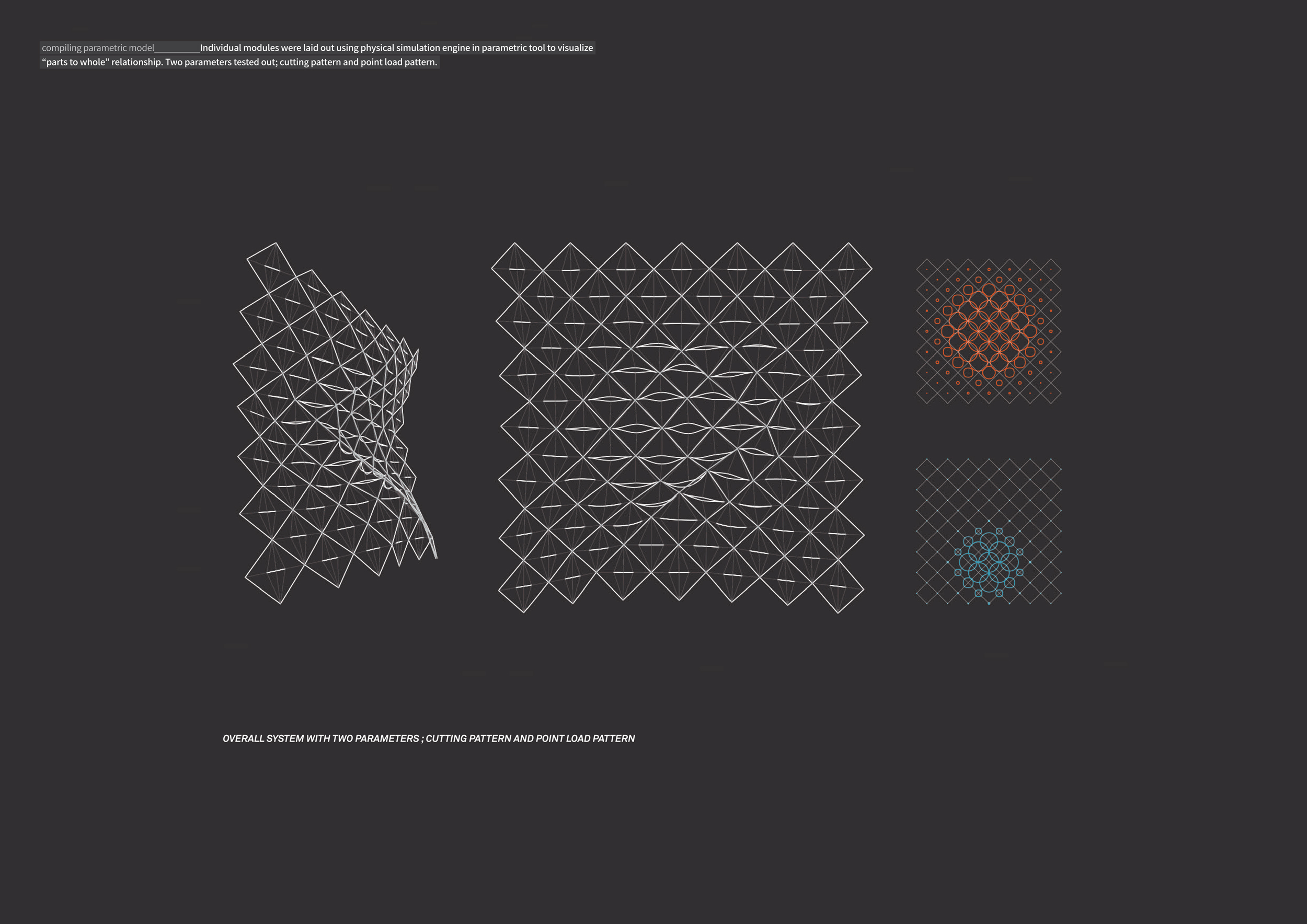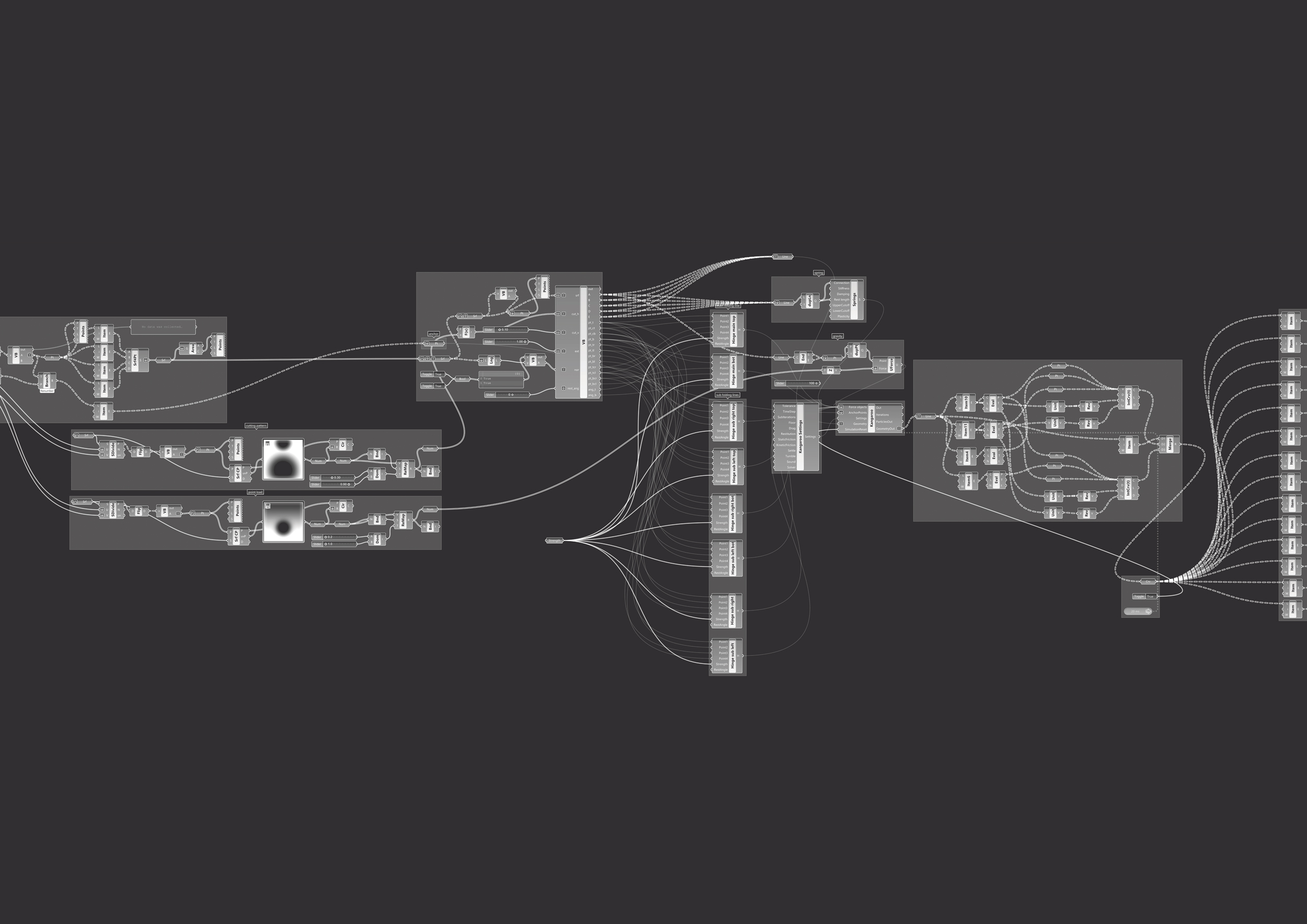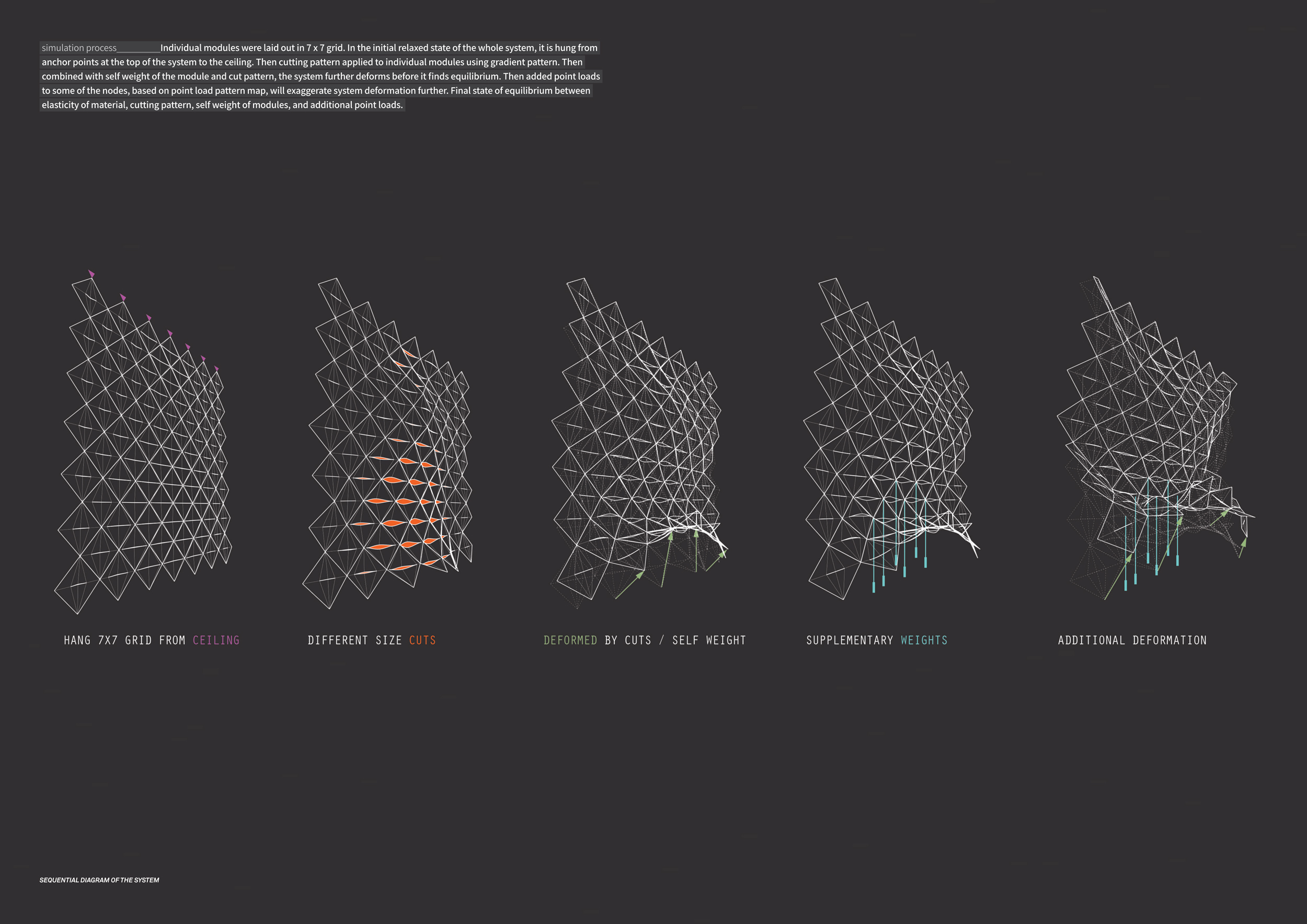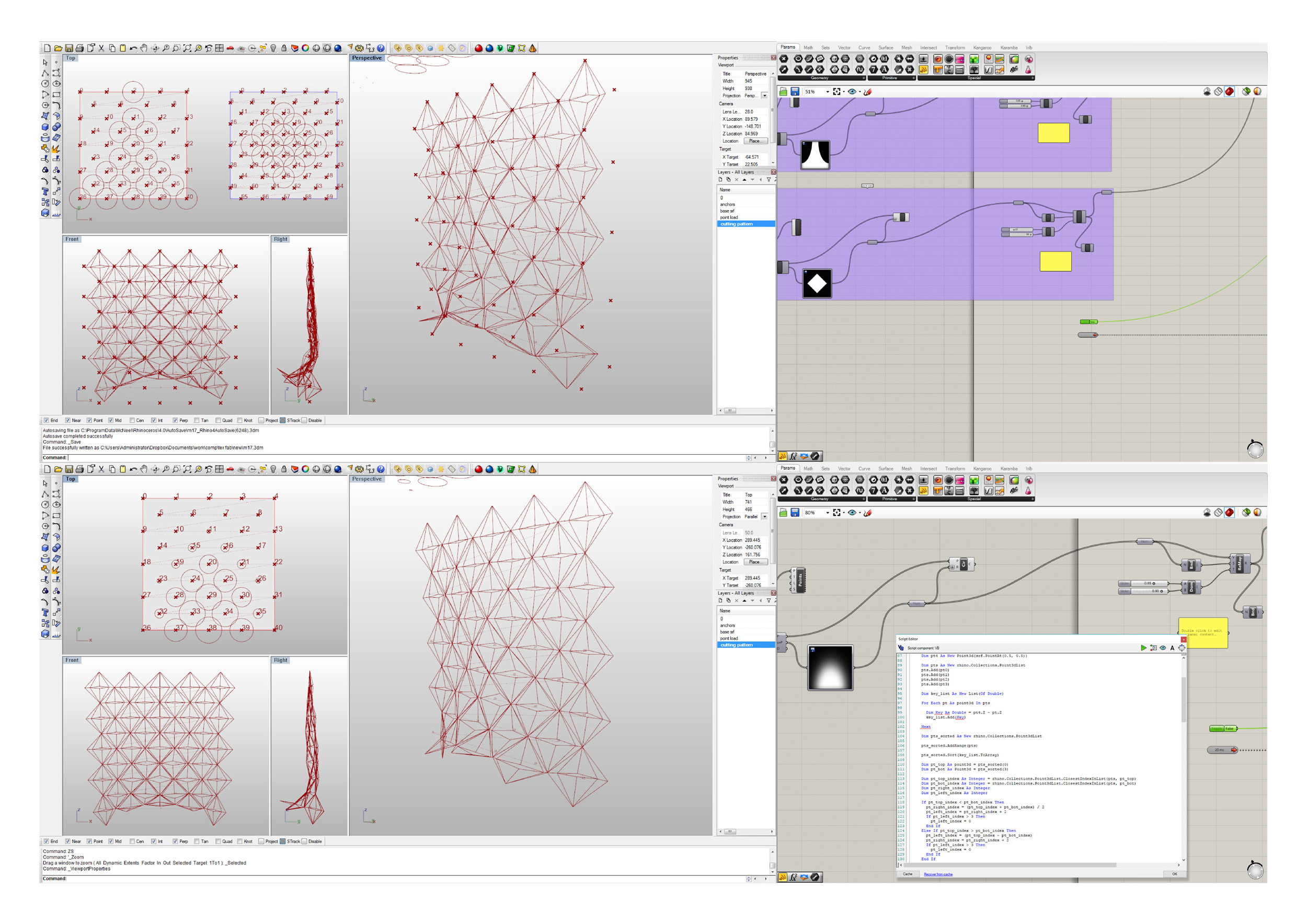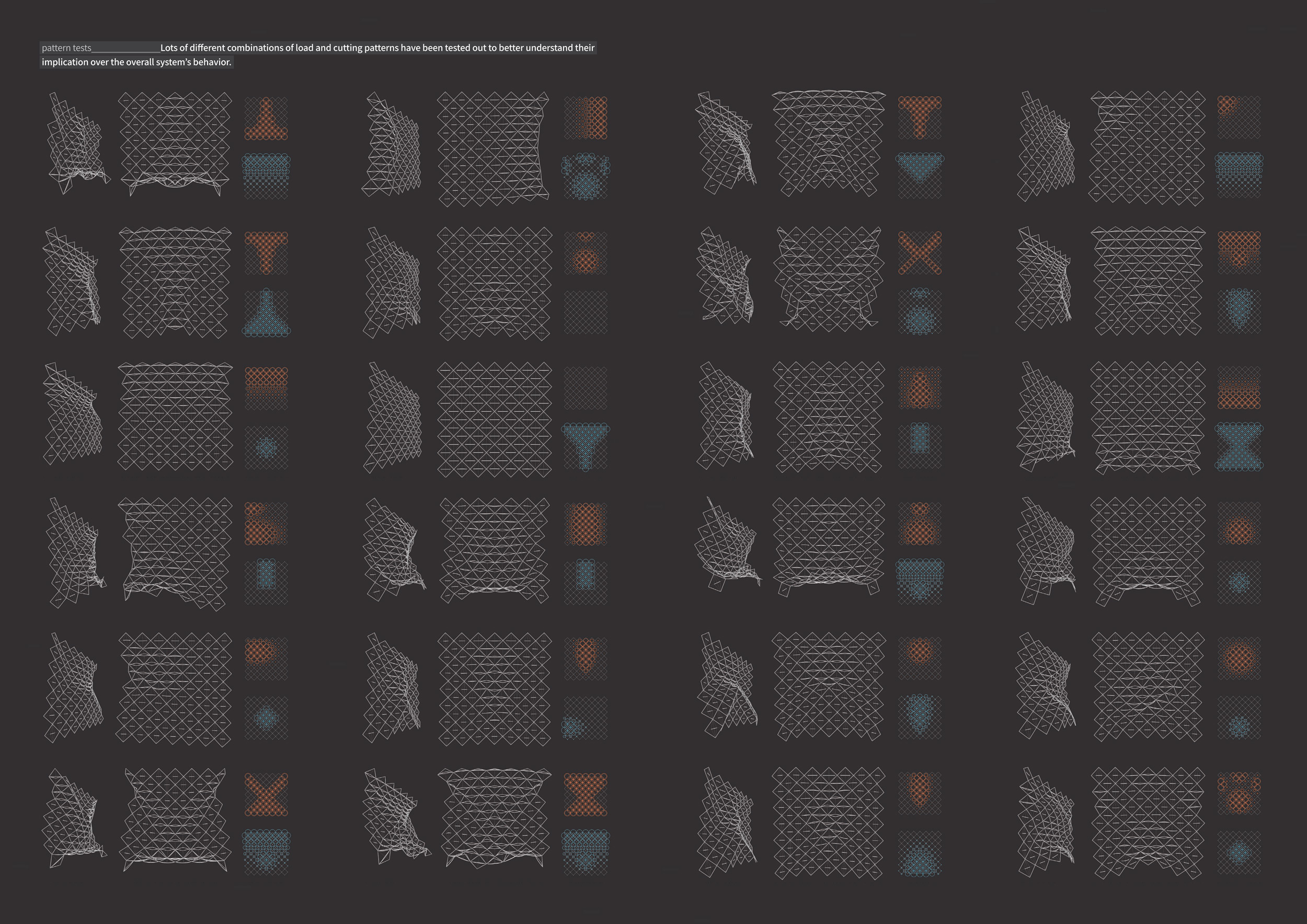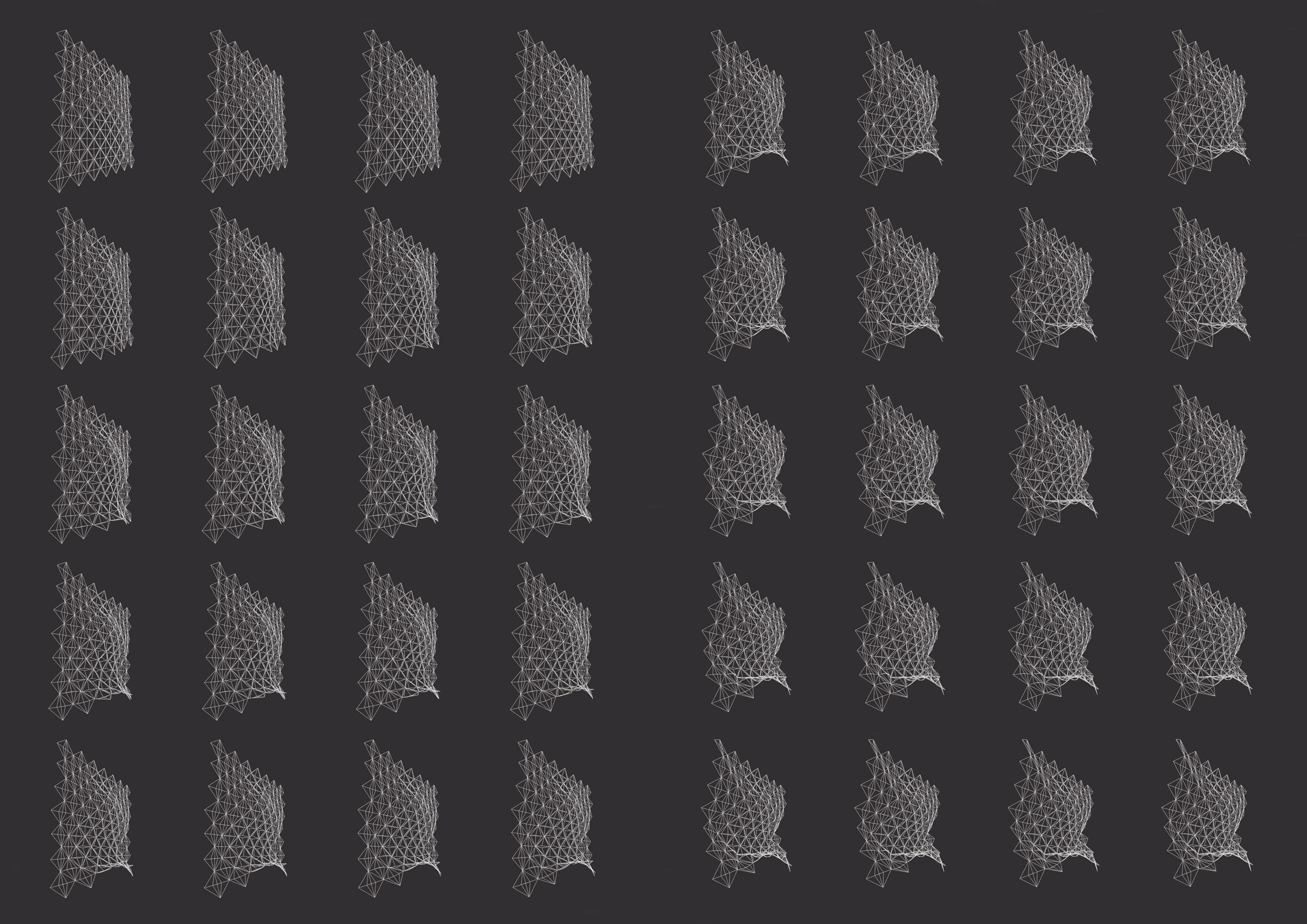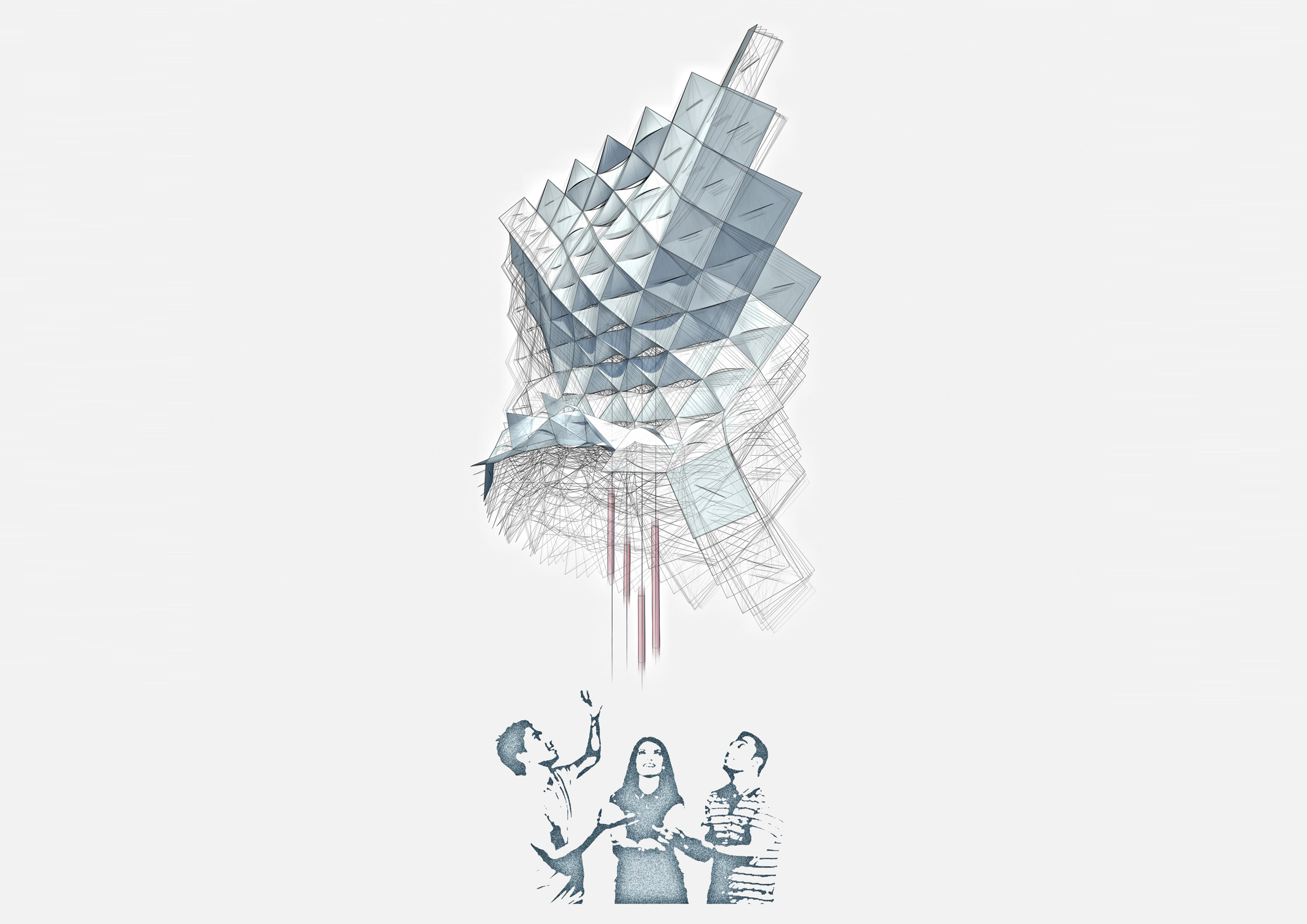Dynamic Tapestry
The goal of the research was to observe physical behavior of a certain material through a series of sample tests, and understand how the behavior changes by minimal alterations on its physical properties. Based on the founding, the sample units were re-interpreted and converted into digital model using parametric tools and physical engine to simulate and forecast holistic behavior of the entire system composed of the units. The dynamic surface is a combination of 7 by 7 diagonally arranged plastic sheet units. Because of its homogeneous material property, the system doesn’t produce any significant changes in its appearance before individual panels get cut differently. The cuts and self-weight of the each panel will drive initial deform through the interaction of pulls and pushes between units. The initial deform can be further exaggerated by supplementary weights at some connecting nodes between panels in a certain area.
Year
2012
Material / Fabrication
Mylar / Laser Cut
Collaborators
Kyuseon Hong
